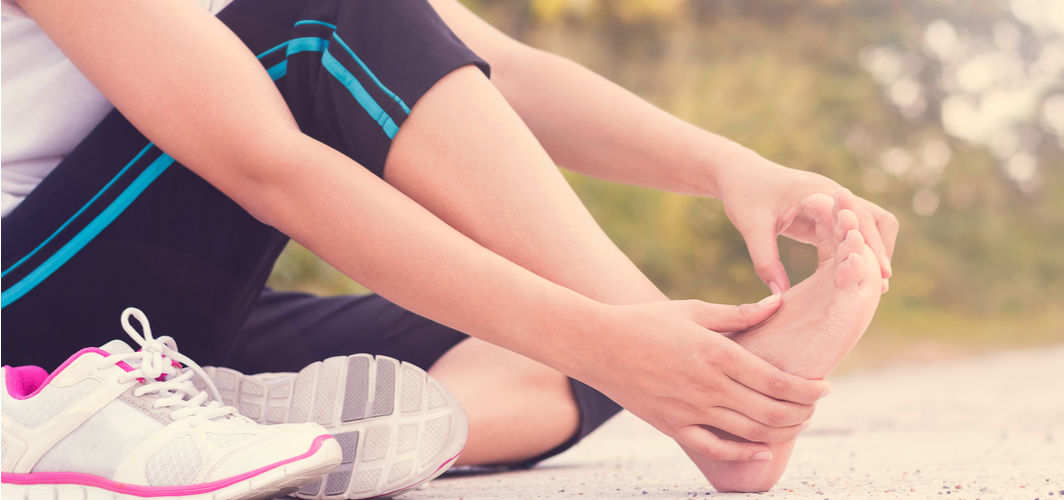Orthopedic Conditions
Should You Worry If You Have Flat Feet?
4 min read
By Apollo 24/7, Published on - 29 June 2021, Updated on - 13 July 2023
Share this article
0
16 likes

Everyone is born with flat feet but by the age of six, they start to form arches. By the time one reaches adulthood, the feet are arched in most cases but in some individuals, the feet remain flat. This condition where one or both the feet are flat or have lower arch than usual, is called flat feet. It is widespread and is also known as fallen arches. Flat feet do not usually exhibit any symptoms except for the flat appearance of the foot and do not cause significant problems. However, some people may experience pain and difficulty walking, especially when the entire sole collapses due to weight gain, running, or strenuous exercises.
What are the causes of flat feet?
Infants and toddlers usually have flat feet which gradually go on to form arches. However, some people may never develop arches or have low arches and may not generally face any problems. Flat feet can even develop at a later stage in life due to reasons which include:
- Pregnancy: Some women undergo musculoskeletal disorders during their pregnancy, which lead to lasting changes in their foot structure. Research hints that weight gain during pregnancy can cause permanent loss of arch height, particularly during a woman's first pregnancy, resulting in flat feet.
- Obesity-induced arches: Being obese or sudden weight gain can lead to flat feet. This is mainly because the arches bear most of the body's weight and help to absorb all the impact while walking, running, and standing for long hours.
- Injury acquired flat feet: Sports injuries, stress fractures, or standing for long hours due to the nature of the profession or extensive travelling can cause flat feet.
- Old age: Years of wear and tear can weaken the tendons inside the ankle supporting the arch. Hence, older men and women suffer from the natural collapsing of the arches, which may lead to pain.
- Other health conditions: Some health conditions can increase the risk of flat feet. This includes high blood pressure, diabetes, Achilles tendons injuries, broken bones, rheumatoid arthritis, and Down syndrome. These conditions can disrupt normal blood flow to the feet, causing weak ligaments and tendons, resulting in flat feet.
How can flat feet be treated?
The first step towards treating flat feet is diagnosing whether the pain is due to fallen arches or other underlying foot conditions. One may be asked to stand on the toes for the doctor to observe the feet from the front and the back. The doctor may recommend an X-ray, ultrasound, or CT scan to determine the cause of the pain and the condition of the tendons in the foot. Usually, the flat foot does not cause problems in day-to-day life but treating it is necessary to prevent worsening of the condition.
Therapy and natural remedies for flat feet
If the condition is detected early (when the affected individual is about 10-12 years of age), the doctor may recommend treatment with orthotic devices to prevent the feet from becoming permanently flat. However, if the flat foot is detected late or is caused by pregnancy, obesity, or injury in later years, the remedies recommended include:
- Resting and Icing: If the pain is severe, avoid all activities that aggravate or worsen it. Apply ice on the affected area and take adequate rest until the pain subsides.
- Stretching exercises: Research suggests that people with flat feet also tend to suffer from Achille's tendons (band of fibrous tendons) that connect the calf muscle to heels. Hence, stretching before walking, jogging, or doing yoga can help prevent further damage to the tendons of the arches.
- Supportive footwear: While walking or doing exercises, one must opt for footwear that supports the fallen arches. Avoid high heels and sandals as much as possible.
- Weight loss: Low arches and flat feet have been associated with increased body weight. Hence, losing weight is known to relieve painful symptoms and prevent excessive pressure on the feet.
- Pain-relieving medications: Applying pain-relieving creams or intake of mild pain killers can offer instant relief from the sharp pain arising due to tenderness in the feet arches.
Conclusion
While everyone has flat feet at birth which gradually arches, some people may continue having them due to genetic reasons or foot injuries. No treatment may be required in most cases. However, one must seek medical help if they have flat feet accompanied by balancing issues and stiffness and pain in the feet. Resting, icing, pain-relieving medications, avoiding strenuous exercises, and wearing supportive footwear can help ease the pain associated with flat feet. A doctor must be consulted to identify the right treatment for such a condition.
For any questions on musculoskeletal health including flat feet, you can talk to an orthopaedician.
Orthopedic Conditions
Leave Comment
Recommended for you

Orthopedic Conditions
What Is Osteopenia How Can It Be Prevented?
Osteopenia is a medical condition where a person loses bone mineral mass, but the loss is not as low to be classified as osteoporosis.

Orthopedic Conditions
Fibromyalgia: Why You Feel Constant, Widespread Body Pain
Fibromyalgia is a condition that results in widespread pain throughout the body and is often accompanied by sleep problems, memory and mood issues, and fatigue.

Orthopedic Conditions
Common Foot Problems That Cause Discomfort and Pain
Foot problems are commonly caused by poorly fitting shoes, spending more time on the feet, overuse like excessive walking or running, and fractures, sprains, or trauma.
Subscribe
Sign up for our free Health Library Daily Newsletter
Get doctor-approved health tips, news, and more.
Visual Stories

How to Keep Your Bones Strong and Healthy Naturally
Tap to continue exploring
Recommended for you

Orthopedic Conditions
What Is Osteopenia How Can It Be Prevented?
Osteopenia is a medical condition where a person loses bone mineral mass, but the loss is not as low to be classified as osteoporosis.

Orthopedic Conditions
Fibromyalgia: Why You Feel Constant, Widespread Body Pain
Fibromyalgia is a condition that results in widespread pain throughout the body and is often accompanied by sleep problems, memory and mood issues, and fatigue.

Orthopedic Conditions
Common Foot Problems That Cause Discomfort and Pain
Foot problems are commonly caused by poorly fitting shoes, spending more time on the feet, overuse like excessive walking or running, and fractures, sprains, or trauma.